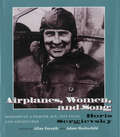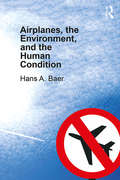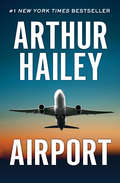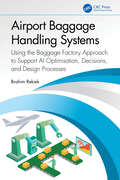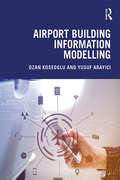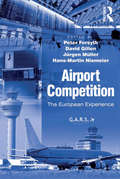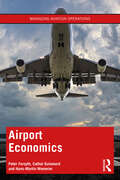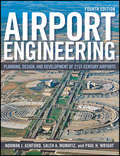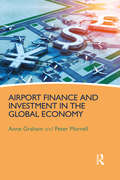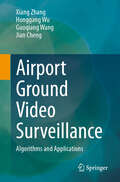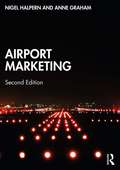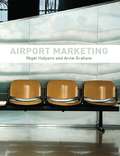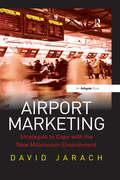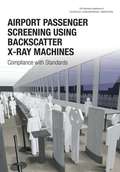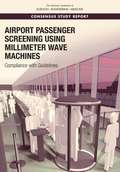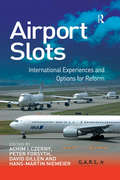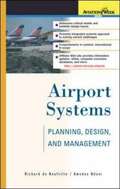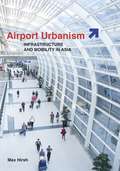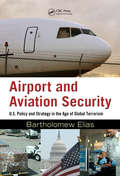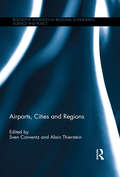- Table View
- List View
Airplanes (Into Reading, Level P #65)
by George IvanoffNIMAC-sourced textbook <p><p> Airplanes are impressive aircraft that are used in many ways. People use airplanes to fight fires and take sick people to safety. Airplanes also fly passengers to exciting places all around the world.
Airplanes, Women, and Song
by Adam Hochschild Allan Forsyth Boris SergievskyBoris Sergievsky was one of the most colorful of the early aviators. He made his first flight less than ten years after the Wright brothers made theirs; he made his last only four years before the first Concorde took off.Born in Russia, Sergievsky learned to fly in 1912. In World War I, he became a much-decorated infantry officer and then a fighter pilot. During the Russian Civil War that followed, he fought on three fronts against the Bolsheviks.Coming to America in 1923, the first job he could find in New York was with a pick and shovel, digging the Holland Tunnel, but he soon joined Igor Sikorsky's airplane company. He became chief test pilot for the Sikorsky flying boats that Pan American Airways used worldwide, setting seventeen world aviation records along the way.Sergievsky also flew pioneering flights across uncharted African and Latin American jungles, flew with Lindbergh, and tested early helicopters and jets. Through it all, his sense of humor remained intact, as did his passion for beautiful women.In 1934 Sergievsky dictated this lively and personal memoir. A natural storyteller, his recollections are as clear and vivid as any reader could hope for. Editors Allan Forsyth and Adam Hochschild, who knew Sergievsky well during his later years - he was Hochschild's uncle - have added three dozen sidebars and more than 40 rare photographs to put Sergievsky's memoir in context for today's readers.
Airplanes, the Environment, and the Human Condition
by Hans A. BaerThe number of airplane flights worldwide continues to grow and is one of the many drivers of climate change. This book examines the aviation industry from an anthropological perspective, focusing on the sector’s environmental impact and the challenges facing attempts to shift to more sustainable solutions. Hans Baer outlines how airplanes have become a key component of modern cultural and social life, and how the world system has become increasingly dependent on them to function. He critically examines current efforts to mitigate the climatic impact of the air travel and argues for a significant move away from air transport, suggesting that such a shift may only be achieved through a more fundamental change in the world system.
Airport (Longman Fiction Ser.)
by Arthur HaileyThe #1 New York Times–bestselling thriller about an airport thrust into chaos by a whiteout blizzard: &“A spellbinder&” (The Denver Post). As a raging blizzard wreaks havoc at Lincoln International Airport outside Chicago, airport and airline personnel try to cope with this unstoppable force of nature that is endangering thousands of lives. And in the air, a lone plane struggles to reach its destination. Over the course of seven pulse-pounding hours, a tense human drama plays out as a brilliant airport manager, an arrogant pilot, a tough maintenance man, and a beautiful stewardess strive to avert disaster. Featuring a diverse cast of vibrant characters, Airport is both a realistic depiction of the airline industry and a novel of nail-biting suspense.This ebook includes a foreword by the author.
Airport Baggage Handling Systems: Using the Baggage Factory Approach to Support AI Optimisation, Decisions, and Design Processes
by Brahim RekiekThe competition between airports demands higher-quality services to satisfy passengers. A Baggage Handling System (BHS) serves functions such as baggage sorting, screening, and storage. A successful BHS means bags move between areas as travellers do. Handlers load/unload bags and transfer them between the airport's areas. Automation can save money and bring safety and operational benefits. Warehouses as well as the automotive industry are more advanced technologically in comparison to the airport and especially the baggage handling business. The concept of the Baggage Factory (BF) is an approach (based on Industry 4.0) that simplifies the processes from the moment passengers drop off their bags at check-in till the destination (chutes, carousels, and so forth). Airport Baggage Handling Systems: Using the Baggage Factory Approach to Support AI Optimisation, Decisions, and Design Processes introduces the features of the BF concept and presents how BHS designers can use AI technology to tackle many BHS problems and concerns. The book bridges the gap between airport BHS designers and experts in AI and optimisation. It describes in detail the field of baggage handling using algorithms for sorting bags or optimising the flow. The way the systems are designed is discussed, and a behind-the-scenes look at the BHS industry and how it affects the daily lives of travellers is presented. International and multidisciplinary in approach, this book is an ideal resource for practitioners, students, and researchers involved in the air transportation industry, Tourism, Systems Engineering, Layout and Design, Artificial Intelligence, Assembly Automation, and Logistics fields.
Airport Building Information Modelling
by Yusuf Arayici Ozan KoseogluThis book details how Building Information Modelling is being successfully deployed in the planning, design, construction and future operation of the Istanbul New Airport, a mega-scale construction project incorporating a varying mix of infrastructures including terminals, runways, passenger gates, car parks, railways and roads. The book demonstrates how Airport Building Information Modelling (ABIM) is being used to: • facilitate collaboration, cooperation and integrated project delivery • manage subcontractors and eliminate cost over-runs • reduce waste on site and enhance overall quality • connect people in a virtual environment to encourage collaborative working • provide clients with an effective interface for lifecycle management including: design development, construction documentation, construction phases and BIM and Big Data Integration for future facilities management The book presents a best practice BIM project, demonstrating concurrent engineering, lean processes, collaborative design and construction, and effective construction management. Moreover, the book provides a visionary exemplar for the further use of BIM technologies in civil engineering projects including highways, railways and others on the way towards the Smart City vision. It is essential reading for all Built Environment and Engineering stakeholders.
Airport Competition: The European Experience
by Peter Forsyth Jürgen Müller David Gillen Hans-Martin NiemeierThe break-up of BAA and the blocked takeover of Bratislava airport by the competing Vienna airport have brought the issue of airport competition to the top of the agenda for air transport policy in Europe. Airport Competition reviews the current state of the debate and asks whether airport competition is strong enough to effectively limit market power. It provides evidence on how travellers chose an airport, thereby altering its competitive position, and on how airports compete in different regions and markets. The book also discusses the main policy implications of mergers and subsidies.
Airport Curbside and Terminal Area Roadway Operations: New Analysis and Strategies, Second Edition
by Transportation Research Board National Academies of Sciences, Engineering, and Medicine Airport Cooperative Research Program InterVISTAS ConsultingAirport access and circulation roadways, curbside roadways, and service roads are used by a wide variety of vehicles. The operating characteristics of airport terminal area roadways differ from those of non-airport roadways because of the high proportion of motorists who are unfamiliar with the airport as well as the presence of many professional drivers who use the airport frequently. ACRP Research Report 266: Airport Curbside and Terminal Area Roadway Operations: New Analysis and Strategies, Second Edition, from TRB’s Airport Cooperative Research Program, is an update of ACRP Report 40: Airport Curbside and Terminal Area Roadway Operations. It presents guidelines for estimating airport roadway requirements and capacities, recommended performance measures, valid and useful analytical methods, and innovative strategies to reduce traffic demands and mitigate congestion on terminal area and curbside roadway operations.
Airport Economics: Recent Developments In Australasia, North America And Europe (Managing Aviation Operations)
by Peter Forsyth Hans-Martin Niemeier Cathal GuiomardThis book provides a comprehensive guide to the economics of airports for all managers, regulators and educators within the aviation industry. Written by three renowned experts but made accessible and relevant for all those working within the industry, or aspiring to do so, it is the perfect entry point for learning about the underlying economics of airports as a crucial component of the air transport system. It explains the cost structures of airports and then relates these to how airports determine their charges. It explains how charges at different airports vary, whether this is due to different types of traffic, different input prices, ways of producing outputs or different levels of efficiency. Most airports are publicly owned or regulated, and there has been a trend towards privatisation. The book explains how airports have been regulated and assesses how well the regulatory structures have performed; it discusses the trend towards light-handed regulation and the reliance on competition where this exists. The book examines the problems of limited capacity at airports and how these are resolved through slots and charging systems, and the long-term solution of investment in airports—why it is controversial, and how it can be achieved effectively. It also considers the environmental impacts of airports and the issues these pose for managers, from the well-known problems of airport noise to the growing recognition of the impacts of air transport on climate change, and the roles airports play in mitigating these consequences. Written for airport and airline managers, regulators and students, this book will suit Bachelor’s and Master’s programmes on air transport management.
Airport Engineering
by Norman J. Ashford Saleh Mumayiz Paul H. WrightFirst published in 1979, Airport Engineering by Ashford and Wright, has become a classic textbook in the education of airport engineers and transportation planners. Over the past twenty years, construction of new airports in the US has waned as construction abroad boomed. This new edition of Airport Engineering will respond to this shift in the growth of airports globally, with a focus on the role of the International Civil Aviation Organization (ICAO), while still providing the best practices and tested fundamentals that have made the book successful for over 30 years.
Airport Finance and Investment in the Global Economy
by Anne Graham Peter MorrellWhile there are a multitude of publications on corporate finance and financial management, only a few address the complexity of air transport industry finance and scant attention has been given to airport financial management. This book deals exclusively with airport issues to rectify this. It does this with an analysis of the theoretical concepts relevant to the subject area combined with a detailed investigation of current practice within the industry. Airport Finance and Investment in the Global Economy bridges the gap between much academic research on airports published in recent years – lacking much managerial relevance – and real-world airport financial management. This is achieved by featuring expert analysis of contemporary issues specific to airport finance and funding strategies, illustrated by worked examples from a wide range of different countries to enhance understanding and create a global perspective. The book is designed to appeal to both practitioners and academics. Airport-specific topics include: performance measurement and benchmarking, valuation, tools for financial control and management, alternatives of financing, privatisation, competition and implications of economic regulation.
Airport Greenhouse Gas Emissions Inventory: A Primer
by Transportation Research Board National Academies of Sciences, Engineering, and Medicine Airport Cooperative Research Program Rs H Cascadia Consulting Group Gresham Smith IcfAirport operators prepare greenhouse gas (GHG) emissions inventories to better understand their emissions profile, set more informed goals, monitor performance, and communicate their progress toward meeting environmental goals to key stakeholders. ACRP Web-Only Document 63: Airport Greenhouse Gas Emissions Inventory: A Primer, from TRB's Airport Cooperative Research Program, is an update to ACRP Report 11: Guidebook on Preparing Airport Greenhouse Gas Emissions Inventories and provides recommended practices for airport operators to account for and manage airport GHG emissions. While all airports can use Airport Greenhouse Gas Emissions Inventory: A Primer, it will be particularly helpful for operators of small to mid-size airports.
Airport Ground Video Surveillance: Algorithms and Applications
by Xiang Zhang Jian Cheng Honggang Wu Guoqiang WangThis book is the first overview book on video surveillance issues within airport grounds. It delves into the distinctive design principles underpinning computer vision algorithms tailored specifically for airport ground video surveillance, while also documenting the latest advancements within this domain. The initial section of this book introduces a comprehensive array of airport ground video surveillance datasets, encompassing the AGVS series alongside other pertinent datasets. Subsequently, the second section delves into the ongoing research endeavors on airport-ground-oriented computer vision algorithms, examining segmentation, recognition, and tracking methodologies. Lastly, the book’s third segment elucidates the design methodologies and exemplary use cases of airport ground video surveillance applications. Written by the authors intimately involved in creating the datasets, algorithms, and applications outlined within, this book stands as an indispensable reference for researchers and graduate students operating within the realm of intelligent transportation.
Airport Marketing
by Anne Graham Nigel HalpernThis accessible, up-to-date, comprehensive, and in-depth textbook introduces students and practitioners to the principles and practice of airport marketing as well as the major changes and future marketing challenges facing the airport sector. It applies principles of marketing within the airport industry, and examines airport marketing and its environment, how to define and measure the market for airport services, airport strategic marketing planning and individual elements of the airport marketing mix (product, price, distribution and promotion). The book integrates key elements of marketing theory with airport marketing in practice. Each chapter contains extensive industry examples for different types of airports from around the world to build on the theoretical base of the subject and show real-life applications. This new second edition has been updated to include: New and expanded content on branding and the passenger experience, marketing partnerships, engagement marketing and customer relationship management. Three brand new chapters on digital marketing, marketing for a more sustainable future, and crisis communications and marketing, in light of the Covid-19 pandemic. New, global case studies and examples throughout. This comprehensive textbook written by two airport marketing experts will be essential reading for air transport students and future managers.
Airport Marketing
by Anne Graham Nigel HalpernIn recent years, the airport sector has moved from an industry characterised by public sector ownership and national requirements, into a new era of airport management which is beginning to be dominated by the private sector and international players. Airports are now complex enterprises that require a wide range of business competencies and skills to meet the needs of their users, just as with any other industry. Moreover, deregulation of air transport markets has made the airport sector much more competitive and given airports greater incentives to develop innovative, proactive and aggressive marketing strategies so that they can reap the benefits from these developments. New types of airline business model, such as low cost carriers, have emerged through deregulation, which in many cases require a completely different approach to be adopted by airport marketers and have encouraged a further deviation from past practice. The travelling public is also becoming more experienced and is generally placing greater demands on the airport operator to deliver a quality product at a time when more stringent controls, especially as regards security, have been introduced. This accessible book fills an important need for an up-to-date, comprehensive and in-depth textbook that introduces students and practitioners to the principles and practice of airport marketing as well as the major changes and future marketing challenges facing the airport sector. It applies principles of marketing within the airport industry, and examines airport marketing and its environment, how to define and measure the market for airport services, airport marketing planning, and individual elements of the airport marketing mix (product, price, promotion and distribution). The book integrates key elements of marketing theory with airport marketing in practice. Each chapter contains extensive industry examples for different types of airports from around the world to build on the theoretical base of the subject and show real-life applications. The dynamic nature of the airport industry requires students and practitioners to have a thorough, up-to-date and contemporary appreciation of airport marketing issues and challenges. This comprehensive, accessible textbook written by two airport marketing experts satisfies this need and is essential reading for air transport students and future managers.
Airport Marketing: Strategies to Cope with the New Millennium Environment
by David JarachAirport Marketing examines the management vision of airport marketing in the post-September 11th environment, presenting in-depth analysis of current airport management practices for both aviation and non-aviation-related activities. The 'aviation-related activities' section covers how an airport as a company develops its own marketing relationship with carriers and, in a broader sense, with all actors within the air transport pipeline, with the aim of increasing the number of intermediate clients consistent with its chosen positioning. The 'non-aviation-related' section, by contrast, focuses on how best-in-class airports have been developing new powers of attraction to customers in their regions, well beyond the simple concept of airport retailing, by use of the so-called 'commercial airport' model. Finally, the impact of September 11th is shown in terms of increased security measures and the future of the aviation industry as a whole. An analysis of worldwide airport industry is provided in the final chapter. Airport Marketing is essential reading for airport managers, government agencies, airlines, consultants, contributors, advisors and sub-contractors to this industry, as well as both undergraduate and graduate level aviation students.
Airport Parking Reservation Systems and Techniques
by Transportation Research Board National Academies of Sciences, Engineering, and Medicine Adrian Leung Airport Cooperative Research Program Stephen D. Van BeekAirport parking is an important customer amenity and a principal source of revenue that helps fund the operation and development of airports. In recent years, growing volumes of passenger traffic and increasing competition from a variety of airport access providers have encouraged airports to seek new ways to attract airport parkers and enhance revenues, which may include implementing an online booking system. ACRP Synthesis 140: Airport Parking Reservation Systems and Techniques, from TRB’s Airport Cooperative Research Program, documents the use of online booking systems at U.S. airports, including their benefits, costs, and implementation challenges.
Airport Passenger Screening Using Backscatter X-Ray Machines: Compliance with Standards
by Committee on Airport Passenger Screening: Backscatter X-Ray MachinesPassenger screening at commercial airports in the United States has gone through significant changes since the events of September 11, 2001. In response to increased concern over terrorist attacks on aircrafts, the Transportation Security Administration (TSA) has deployed security systems of advanced imaging technology (AIT) to screen passengers at airports. To date (December 2014), TSA has deployed AITs in U. S. airports of two different technologies that use different types of radiation to detect threats: millimeter wave and X-ray backscatter AIT systems. X-ray backscatter AITs were deployed in U. S. airports in 2008 and subsequently removed from all airports by June 2013 due to privacy concerns. TSA is looking to deploy a second-generation X-ray backscatter AIT equipped with privacy software to eliminate production of an image of the person being screened in order to alleviate these concerns. This report reviews previous studies as well as current processes used by the Department of Homeland Security and equipment manufacturers to estimate radiation exposures resulting from backscatter X-ray advanced imaging technology system use in screening air travelers. Airport Passenger Screening Using Backscatter X-Ray Machines examines whether exposures comply with applicable health and safety standards for public and occupational exposures to ionizing radiation and whether system design, operating procedures, and maintenance procedures are appropriate to prevent over exposures of travelers and operators to ionizing radiation. This study aims to address concerns about exposure to radiation from X-ray backscatter AITs raised by Congress, individuals within the scientific community, and others.
Airport Passenger Screening Using Millimeter Wave Machines: Compliance with Guidelines
by Engineering Medicine National Academies of SciencesThe Transportation Security Administration requested a study by the National Research Council (NRC) to establish the Committee on Airport Passenger Screening: Millimeter Wave Machines to evaluate two models of active millimeter wave scanners: the L3 ProVision 1 and L3 ProVision 2. Airport Passenger Screening Using Millimeter Wave Machines provides findings and recommendations on compliance with applicable health and safety guidelines and appropriateness of system design and procedures for preventing over exposure. This study addresses the issue of whether millimeter wave machines used at airports comply with existing guidelines and whether it would be possible for anything to go wrong with the machines so that, by mistake, it exposes a person to more than 10 W/m2.
Airport Practices for Onboarding a New Passenger Airline
by Transportation Research Board National Academies of Sciences, Engineering, and Medicine Airport Cooperative Research Program C. Daniel PratherAfter new airline service has been acquired, preparing for the airline to launch service requires advance planning and coordination between the airport and new airline. Onboarding a new airline involves multiple people and/or departments at the airport. ACRP Synthesis 134: Airport Practices for Onboarding a New Passenger Airline, from TRB's Airport Cooperative Research Program, describes airport practices and approaches as to how airport staff prepare to onboard a new passenger airline.
Airport Slots: International Experiences and Options for Reform
by Peter Forsyth Achim I. CzernyOver the past several decades, commercial air traffic has been growing at a far greater rate than airport capacity, causing airports to become increasingly congested. How can we accommodate this increased traffic and at the same time alleviate traffic delays resulting from congestion? The response outside the US has been to set a maximum number of slots and use administrative procedures to allocate these among competing airlines, with the most important consideration being 'grandfather rights' to existing carriers. The United States, on the other hand, has used administrative procedures to allocate slots at only four airports. In all other cases, flights have been handled on a first-come, first-served basis, with aircraft queuing for the privilege of landing or taking off from a congested airport. While recognizing the advantages of slot systems in lessening delays, economists have criticized both approaches as being sub-optimal, and have advocated procedures such as slot auctions, peak-load pricing and slot trading to better utilize congested airports. Edited by an international team of air transport economists and drawing on an impressive list of contributors, Airport Slots provides an extremely comprehensive treatment of the subject. It considers the methods currently used to allocate slots and applies economic analysis to each. The book then explains various schemes to increase public welfare by taxing or pricing congestion, and describes alternate slot-allocation schemes, most notably slot auctions. In addition, Airport Slots outlines the complexities involved in slot-allocation methods, including the requirement for multiple slots - a take-off slot at London Heathrow is useless unless there is a landing slot available at Frankfurt for a London Frankfurt flight. Finally, the book explores the economic pitfalls of slot-allocation schemes; for example, controls may not be required if external delay costs are internalized by a dominant carrier at its hub. Airport Slots provides a valuable contribution to the debate on how best to limit airport congestion. The book's comprehensive treatment of the subject matter provides the reader with a 'one-stop' volume to explore airport congestion and slot-allocation schemes, offering valuable insights to academics and practitioners alike.
Airport Systems: Planning, Design, and Management
by Richard De Neufville Amedeo R. OdoniThe new standard on airport systems planning, design, and management. Provides solutions to the most pressing airport concerns: expansion, traffic, environment, additions, etc. Full coverage of computer-based tools and methodology. Additional reports and updates available via authors' website
Airport Urbanism: Infrastructure and Mobility in Asia
by Max HirshThirty years ago, few residents of Asian cities had ever been on a plane, much less outside their home countries. Today, flying, and flying abroad, is commonplace. How has this leap in cross-border mobility affected the design and use of such cities? And how is it accelerating broader socioeconomic and political changes in Asian societies? In Airport Urbanism, Max Hirsh undertakes an unprecedented study of airport infrastructure in five Asian cities—Bangkok, Hong Kong, Shenzhen, Kuala Lumpur, and Singapore. Through this lens he examines the exponential increase in international air traffic and its implications for the planning and design of the contemporary city. By investigating the low-cost, informal, and transborder transport systems used by new members of the flying public—such as migrant workers, retirees, and Asia&’s emerging middle class—he uncovers an architecture of incipient global mobility that has been inconspicuously inserted into places not typically associated with the infrastructure of international air travel. Drawing on material gathered in restricted zones of airports and border control facilities, Hirsh provides a fascinating, up-close view of the mechanics of cross-border mobility. Moreover, his personal experience of growing up and living on three continents inflects his analyses with unique insight into the practicalities of international migration and into the mindset of people on the move.
Airport and Aviation Security: U.S. Policy and Strategy in the Age of Global Terrorism
by Bartholomew EliasThe response of the U.S. federal government to the events of September 11, 2001 has reflected the challenge of striking a balance between implementing security measures to deter terrorist attacks while at the same time limiting disruption to air commerce. Airport and Aviation Security: U.S. Policy and Strategy in the Age of Global Terrorism is a co
Airports, Cities and Regions (Routledge Advances in Regional Economics, Science and Policy)
by Sven Conventz Alain ThiersteinSince the emergence of urban systems, cities have developed in a mutually inter-dependent process of socio-economic dynamics and transportation linkages. In recent years, Airports worldwide have stepped beyond the stage of being pure infrastructure facilities while the complex dynamics that are taking place at and around international airports represent a crucial element in the post-industrial reorganisation of urban and regional systems. Airports are increasingly recognized as general urban activity centres; that is, key assets for cities and regions as economic generators and catalysts of investment in addition to being critical components of efficient city infrastructure. This book brings together contributions from renowned academic scholars and world leading practitioners to discuss insights gained from theory and practice. The first collection of papers reflects upon the general role and future of airports as well as their specific contribution to competitive advantages within a fast changing business and economic landscape. The second group of contributions ask about the role airports play within the innovation process that is inherently centred on generating and sharing knowledge. The third section of papers investigates the drivers of real estate developments on airport land and in the close vicinity of airports.

